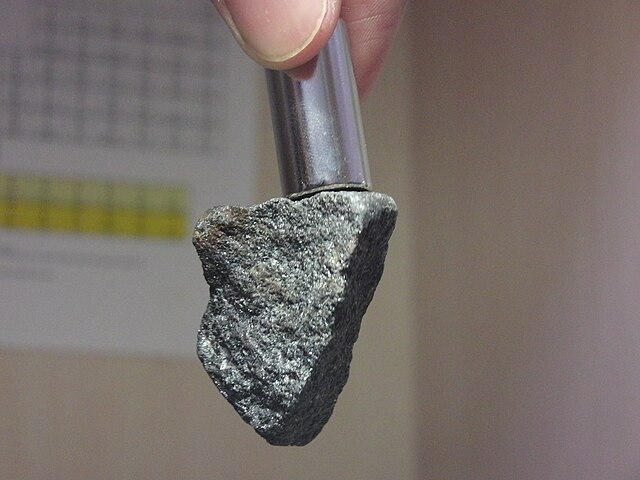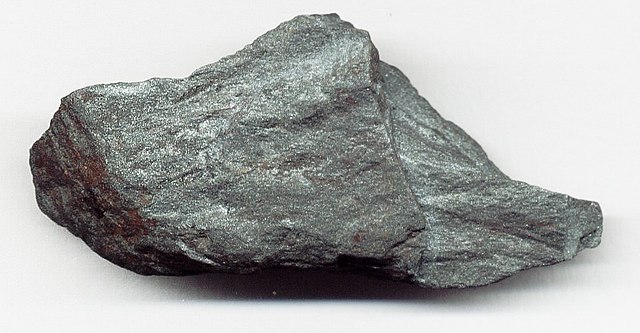Magnetite is a mineral and one of the main iron ores, with the chemical formula Fe2+Fe3+2O4. It is one of the oxides of iron, and is ferrimagnetic; it is attracted to a magnet and can be magnetized to become a permanent magnet itself. With the exception of extremely rare native iron deposits, it is the most magnetic of all the naturally occurring minerals on Earth. Naturally magnetized pieces of magnetite, called lodestone, will attract small pieces of iron, which is how ancient peoples first discovered the property of magnetism.
Magnetite from Bolivia
Magnetite is one of the very few minerals that is ferrimagnetic; it is attracted by a magnet as shown here
Magnetite and other heavy minerals (dark) in a quartz beach sand (Chennai, India).
Octahedral crystals of magnetite up to 1.8 cm across, on cream colored feldspar crystals, locality: Cerro Huañaquino, Potosí Department, Bolivia
Iron ores are rocks and minerals from which metallic iron can be economically extracted. The ores are usually rich in iron oxides and vary in color from dark grey, bright yellow, or deep purple to rusty red. The iron is usually found in the form of magnetite (Fe3O4, 72.4% Fe), hematite (Fe2O3, 69.9% Fe), goethite (FeO(OH), 62.9% Fe), limonite (FeO(OH)·n(H2O), 55% Fe), or siderite (FeCO3, 48.2% Fe).
Hematite, the main iron ore found in Brazilian mines
Stockpiles of iron ore pellets like this one are used in steel production.
An illustration of iron ore being unloaded at docks in Toledo, Ohio
Banded iron ock, estimated as being 2.1 billion years old








